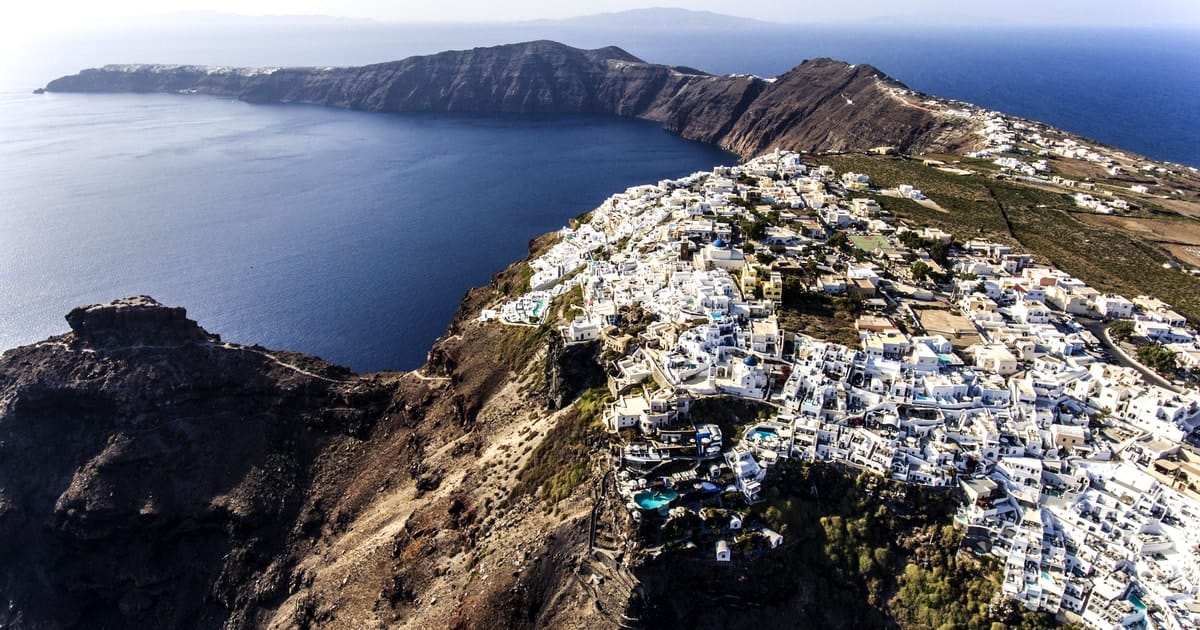Santorini, the picturesque Greek island known for its dramatic caldera views and whitewashed buildings, is witnessing heightened anxiety among its locals and tourists due to a series of earthquakes over recent weeks. The tremors, which have ranged in intensity, have sparked fears of potential volcanic activity in a region known for its seismic and volcanic history.
The island lies atop a dormant volcanic system that has been inactive for decades, with its last significant eruption occurring in 1950. However, Santorini’s geological past is a reminder of the destructive potential of its volcanic system. Around 1600 BC, the island experienced one of history’s largest volcanic eruptions, shaping the landscape and affecting civilizations across the Aegean Sea.
In recent weeks, Santorini has recorded hundreds of low-to-moderate magnitude tremors. As scientists and seismologists observe the patterns, fears have grown among locals who remain wary of historical precedents. Authorities in Greece have implemented precautionary measures by deploying emergency rescue services and reinforcing the island’s disaster response teams to ensure preparations are in place should conditions escalate.
Experts from the Greek Geodynamic Institute have set up specialized monitoring equipment across the region to analyze the seismic activity in real-time. Despite the increased activity, they have reassured citizens and tourists that there are no immediate signs of magma movement or volcanic eruption within the caldera. The tremors are attributed primarily to shifts in tectonic plates, a common occurrence in the region.
Amid fears, many tourists have expressed their hesitation to continue their holidays on the island. Reports indicate a decline in tourist footfall, impacting local businesses that heavily rely on tourism for economic stability. Some hotels have begun offering cancellation waivers, while others have seen an exodus of tourists out of caution. Meanwhile, local residents have grown increasingly anxious, with some choosing to temporarily relocate to mainland Greece until the seismic activity stabilizes.
Santorini’s history and volatile geophysical features make it a hotspot for seismic activity. Its caldera, formed by millennia-old volcanic eruptions, has always been a subject of scientific interest as well as a source of natural beauty. Scientists believe the island’s geological complexity continues to inform modern understandings of volcanic systems worldwide.
“Our job is to keep the population informed and calm,” said Efthymios Lekkas, a leading Greek seismologist and the president of the Earthquake Planning and Protection Organization. He emphasized that while the situation must be taken seriously, the continuous advancements in seismic monitoring provide critical tools for navigating such events. According to him, the current tremors show no correlation with volcanic activity underneath the island.
As authorities and experts divert their resources to assess, monitor, and respond, citizens are urged to remain vigilant and adhere to guidance. Tourism boards, businesses, and various agencies are simultaneously working to mitigate panic while ensuring safety remains a priority.
The Greek government has also convened a special committee to evaluate the situation and coordinate a broader response strategy. This includes sending additional resources for communication campaigns targeted toward demystifying the ongoing seismic activity and dispelling misinformation regarding volcanic risk.
Seismologist Maria Papazachos, who recently visited the island for an assessment, pointed out that while Santorini’s geological formation allows room for occasional tremors, the overlapping of tectonics and historical volcanic systems makes it an important area to monitor. “Preparedness is key,” she said, noting that consistent collaboration between local authorities and international seismic experts is crucial for minimizing disruption and risk.
In the face of uncertainty, the beauty and resilience of Santorini stand as testaments to its historical and cultural significance. As the island continues to navigate this natural challenge, efforts are centered on protecting its residents and preserving its allure as one of the Mediterranean’s crown jewels.



